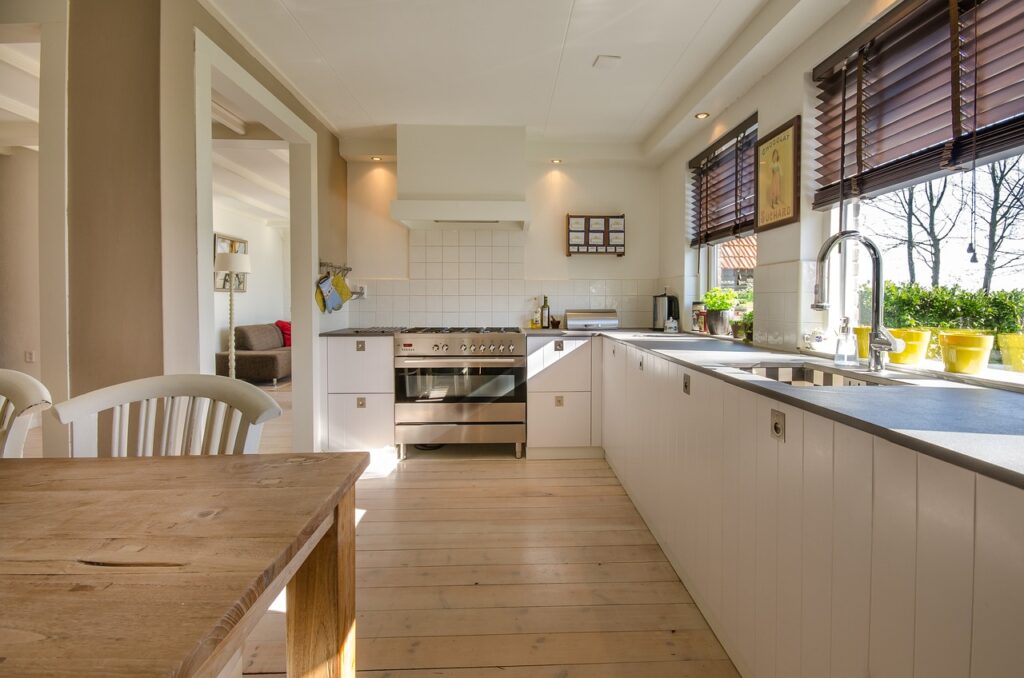Designer kitchen cabinets play a key role in defining the style, functionality, and overall feel of a kitchen. They offer a blend of high-quality materials, customized features, and varied styles that can transform any space into a more efficient and visually appealing environment. Choosing designer cabinets means investing in personalized solutions that maximize storage while complementing the kitchen’s design.
These cabinets come in a wide range of options, from sleek modern finishes to timeless traditional looks, allowing homeowners to match their personal taste and the home’s architecture. With options for custom sizing, unique hardware, and premium craftsmanship, designer cabinets provide versatility that standard cabinetry often lacks.
In addition to aesthetics, durability and smart organization are often prioritized with designer kitchen cabinets. This combination of form and function makes them a practical choice for anyone looking to enhance both the beauty and usability of their kitchen.
Types of Designer Kitchen Cabinets
Designer kitchen cabinets vary in customization level, design flexibility, and cost. Options range from fully tailored solutions to semi-custom and ready-made styles, each providing different advantages for style and functionality.
Custom Cabinet Solutions
Custom cabinets are built to exact specifications, offering unmatched flexibility in design, materials, and finishes. They allow homeowners to optimize storage and fit unusual kitchen layouts without compromise.
Each piece is crafted to order, making it possible to incorporate unique features like built-in organizers or specialty hardware. This level often involves higher costs and longer lead times but results in a cabinet system precisely aligned with the user’s needs and style preferences.
Custom solutions are best for those seeking personalized design and willing to invest in durability and detailed craftsmanship.
Semi-Custom Designs
Semi-custom cabinets provide a balance between personalization and cost efficiency. They start with pre-manufactured boxes and offer options for door styles, finishes, and hardware upgrades.
This category allows some customization while maintaining quicker production than fully custom cabinets. It suits homeowners wanting unique aesthetics without the full expense of bespoke work.
Semi-custom cabinets often include adjustable shelving and variable sizes but may have limits on shape and size flexibility compared to custom options.
Pre-Made Designer Styles
Pre-made designer cabinets come fully assembled with fixed dimensions and styles chosen for current trends and mass appeal. These are typically available at retail stores or specialty outlets.
They provide immediate availability and lower price points but less flexibility for unusual dimensions or unique storage requirements.
This option is ideal for straightforward layouts and homeowners focused on budget and speed, but with limited personalization beyond finish and hardware choices.
Choosing the Right Designer Cabinets for Your Kitchen
Selecting designer cabinets involves evaluating aesthetics, materials, and functionality to create a balanced kitchen space. Careful attention to style trends, cabinet finishes, and storage solutions ensures the cabinets meet daily needs while complementing the overall kitchen design.
Design Trends and Styles
Designer kitchen cabinets range from traditional raised panels to sleek flat panels, each offering a distinct look. Popular styles include Shaker, known for its clean lines and versatility, and glass-front cabinets, which add openness and display space.
Color plays a vital role. Neutral tones like whites, grays, and blacks remain predominant. Bold colors or two-tone designs, where upper and lower cabinets differ in shade, are gaining traction.
Hardware styles also influence the feel. Matte black handles provide modern contrast, while brushed nickel suits transitional kitchens. The key is to select styles that maintain timelessness rather than follow fleeting trends.
Material and Finish Options
Durability and appearance depend on material choice. Solid wood offers strength and can be refinished but tends to be more costly. Engineered wood, like plywood or MDF with veneer, provides stability and affordability.
Finishes vary widely. Painted surfaces give a smooth, uniform look, while stains highlight wood grain. Matte finishes reduce glare and hide fingerprints; gloss finishes reflect light and brighten small kitchens.
Eco-friendly options, such as formaldehyde-free MDF and sustainable hardwoods, are increasingly preferred. These materials support environmental responsibility without compromising quality or style.
Space Optimization Strategies
Designer cabinets must maximize storage without crowding the kitchen. Incorporating pull-out shelves and deep drawers for pots and pans enhances access and organization.
Utilizing every inch matters. Corner cabinets with lazy Susans or pull-out trays prevent wasted space. Tall pantry cabinets make use of vertical area efficiently.
Placement is strategic: upper cabinets should store frequently used items within easy reach, while base cabinets hold heavier cookware. Adding specialized compartments for appliances or spices can streamline meal preparation.



